We’re back on course to the next Blue Zone – the Nicoya Peninsula of Costa Rica! Casado – the Blue Zone lunch, is our take on a Nicoyan central meal of the day: protein, plantains and salad, along with a foundation of black beans and rice.
Before scoffing too hard–Beans and rice? Are you kidding me?–consider that the average 60 year-old Costa Rican male is twice as likely to make it to 90 than his American counterpart. This is also happening in a country in “the developing world” that spends a fraction of what America does on health care.*
The Nicoya Peninisula is an 80-mile long thumb of land that juts into the Pacific from the northwest corner of Costa Rica. Among a certain type of backpacking tourist the peninsula is famous for its many beaches which ring the coastline. But the Blue Zone of the Nicoya Penisula does not include the coast – it is the rural interior, where many inhabitants still live a traditional lifestyle, either as independent farmers or as sedentary agricultural workers finding employment on larger farms; they raise their own corn, beans, and other vegetables (including two forms of taro) in their own family plots. Until recently the Nicoya Peninsula was set apart by its geographic isolation, reachable only by ferry, but since the 2003 opening of the Taiwan Friendship Bridge the outside world has been drawing closer.
At first glance the Nicoyan diet may seem a Central American cliché with its staples of rice, beans, tortillas and variety added by other vegetables and infrequent (by American standards) eggs, or small portions of chicken or beef. But notable features set the local diet far apart from the rest of Costa Rica, and indeed, from the rest of the world. For one thing, Nicoyans eat a lot of fruit that rest of us will almost never see. While an American would recognize bananas, oranges and lemons in the Nicoyan fruit basket, other more exotic tropical fruits would seem bafflingly unfamiliar, yet these provide the Nicoyans with a huge antioxidant boost. The cashew apple, to cite just one example, contains five times as much vitamin C as an orange. Fruit consumption may play a role in the low rate of cancer among Nicoyans, something not enjoyed by their fellow Costa Ricans outside the Blue Zone.
A second striking feature of the Nicoyan diet is its high calcium content. Some of the calcium is sourced through the calcium and magnesium rich local water, augmented by local reliance on the tradition of cooking corn with ash and lye, which increases the calcium content of corn and, by extension, tortillas. Calcium is critical to maintaining bone density, and warding off one of the most common contributing causes to fatal injury among the elderly–a fall leading to a hip fracture.
Other lifestyle features undoubtedly assist in making the Nicoyans the longest-lived, healthiest people on the planet. Traditional dwellings are often without electricity, which means that people go to bed early and, after a full night’s sleep, rise with the sun. Like rural Sardinians Nicoyans engage in day-long low-intensity physical exercise through farm labor, domestic chores and the necessity of walking to get around. Also in keeping with the occupants of other Blue Zones, Nicoyans highly value their family connections. Centenarians almost never live alone, but with other immediate family members who value them.

Cashew apple, or marañón. The “apple” portion is packed with antioxidants; the boxing glove shaped shell below contains a seed, the raw cashew nut, packed in a toxic bath of anacardic acid, chemically similar to the irritant in poison ivy. Typically the seed and its case are discarded, rather than processed. Photo credit: Eric Gaba – Wikimedia Commons user: Sting
Casado, “married man” in Spanish, is the traditional Costa Rican lunch plate (and for Nicoyans the largest meal of the day). To the base of beans, rice and tortillas, are added cabbage salad, plantains, slices of queso fresco, and a modest portion of beef, chicken, fish or a fried egg. Depending on the economic circumstances of the particular Nicoyan, this may happen as often as several times a week, or not at all. Casado is a remarkably satisfying meal, even with a single fried egg. Having consumed it a half dozen times in preparation for this post I can vouch that it would be more than suitable for brunch, or you could gussy it up for a summer dinner by making everything ahead and then grilling some fish or chicken at the last minute to add during the final assembly. I’ve also, God help me, developed a taste for microwaved leftover plantains, eaten with yogurt and drizzled with a bit of chestnut honey. My wife thinks I’m crazy. We’ll see who lives longer. Enjoy. Ken
*For facts in this post concerning the Nicoya Peninsula, the health of its inhabitants and their diet, I am indebted to Dan Buettner’s book The Blue Zones, available at www. bluezones.com or on Amazon.com. For the month of January–and a little beyond–we’re writing posts about the food of the Blue Zones, a term coined by Dan Buettner and his partners, Dr. Gianni Pes of the University of Sassari in Italy and Dr. Michel Poulain, a Belgian demographer. Blue Zones are five specific regions in the world where people live exceptionally long, healthy lives. The Blue Zones include the Greek Island of Ikaria; Okinawa, Japan; the Nicoya Peninsula, Costa Rica; the Barbagia region in Sardinia, Italy; and the Seventh-Day Adventist community of Loma Linda, California. For additional information check out our previous posts about Blue Zones food here, here and here. You can find Dan Buettner’s article in the New York Times Magazine that aroused our interest here; and you can find additional information at the Blue Zones® website.
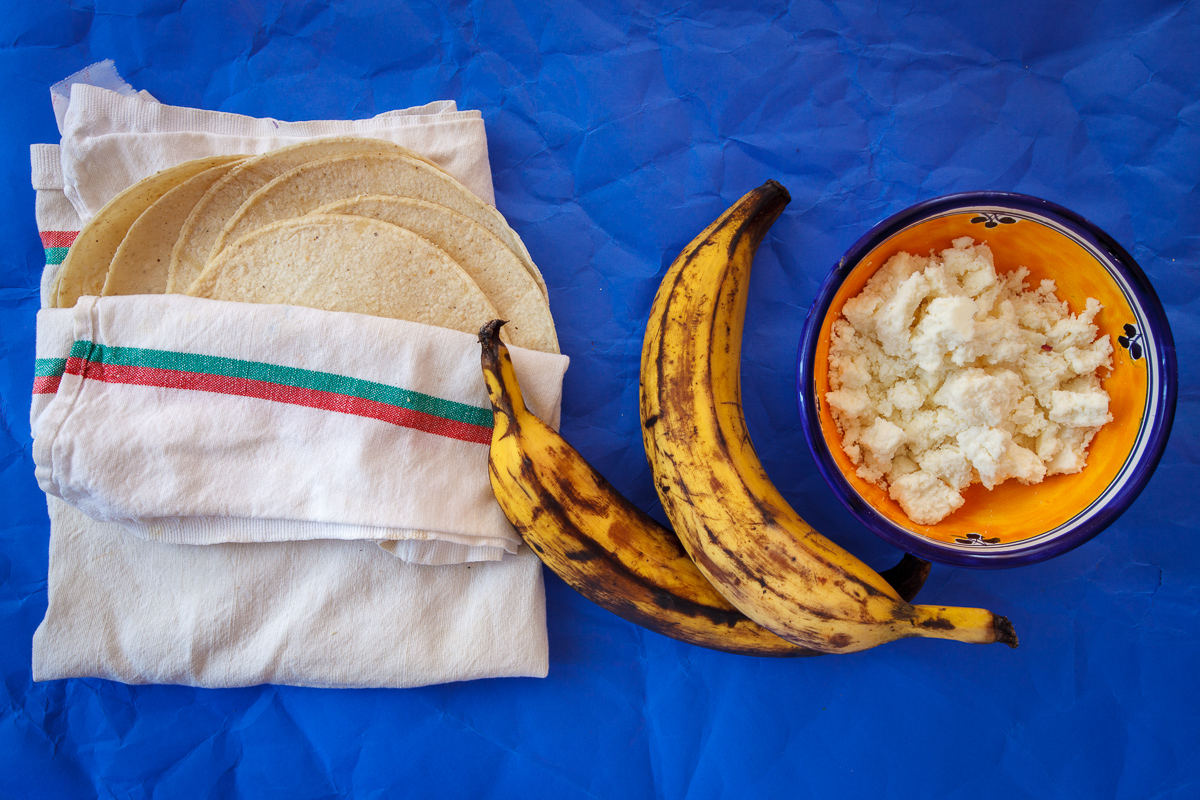
Casado
Serves 4, with seconds, or generous leftovers.
Note: ½ cup + 1 tablespoon vegetable is listed in the salad ingredients. Only 3 tablespoons are used in the salad recipe – the remainder is used with the beans (2 tablespoons), the plantains (3 tablespoons) and the eggs (1 tablespoon).
Rice:
- 1 cup short-grain brown rice
- 2 teaspoons sweet paprika
- 2 strips sour orange zest, each ½-wide and 2-3 inches long (taken from the sour oranges in the in the salad ingredients, or from regular oranges if sour ones aren’t available)
- 1 teaspoon fresh thyme leaves
- 2 cups water or vegetable stock
- Kosher salt and freshly ground black pepper
Directions:
- Put rice, paprika, 2 strips of sour orange zest and thyme leaves in a pot with 2 cups of water or vegetable stock and season with salt and pepper. Bring to a boil, then reduce the heat to low, cover and cook 45 minutes or until done.
Salad:
- 4 cups very thinly sliced white cabbage
- Juice of 2 sour oranges (reserve 2 strips of zest – see rice ingredients) If you can’t find sour oranges, substitute the juice of 1 regular orange + the juice of a lemon.
- 1 small red onion, thinly sliced and soaked 15 minutes in ice water
- 1 bunch radishes, thinly sliced
- 1 pint grape tomatoes, cut in half
- 2 sweet oranges, trimmed of skin and pith, cut into supremes
- 1 cup coarsely chopped cilantro leaves, plus additional sprigs for garnish
- ½ cup + 1 tablespoon vegetable oil
Directions:
- Toss the cabbage with the orange juice, season with salt and pepper and let sit 30 minutes.
- Drain and pat the onions dry with paper towel. Add the red onions, sliced radishes, tomatoes, orange supremes, cilantro and 3 tablespoons oil to the cabbage. Toss gently. Taste and adjust seasonings.
Beans:
- 1 large white onion, cut into ¼-inch dice
- 1 red pepper, cut into ¼-inch dice
- 1 small chili pepper, thinly sliced
- 2 teaspoons minced ginger
- 4 cloves garlic, minced
- ½ teaspoon cumin seeds, crushed
- ½ teaspoon coriander seeds, crushed
- 2 cups cooked black beans with their liquid
Directions:
- Heat 2 tablespoons oil in a large saute pan over medium heat. Add the diced onions and cook 10 minutes, or until toasty brown, stirring often. Add the peppers, ginger, garlic and spices, season with salt and pepper and cook 2 minutes. Add the black beans, with their cooking juices, reduce the heat to low and simmer 15 minutes. Taste and adjust seasonings.
Plantains, eggs and cheese:
- 2 ripe plantains, cut into ¾-inch slices on the diagonal and peeled
- 4 large eggs
- 8-12 corn tortillas
- 1 cup crumbled queso fresco or farmer’s cheese
- 1 lime, cut into quarters (an afterthought, so it’s not in the ingredients photos)
Directions:
- Heat 3 tablespoons oil in a large frying pan over medium heat. Add the plantain slices and cook on the first until golden brown, about 5 minutes. If they darken faster than that, turn down the heat – you need to be able cook them long enough to soften without completely blackening. Flip them, then after they’ve had a chance to cook on the second side for a couple of minutes, use a spatula or other convenient tool at hand to flatten them. (We use a plastic holder for reading glasses, which is also great for bashing garlic.) Cook on the second side for a total of 5 minutes, then flip them again and cook on the first side for a few minutes. Transfer to a plate and keep warm.
- Add the remaining tablespoon of oil to the pan over low heat. Crack the eggs into the pan far enough apart so they don’t touch, or so that if they do touch they’re still easy to remove separately. Cover and cook until whites are set and the yolks are still runny; longer, if you like your yolks firmer. Season with salt and pepper.
- Wrap the tortillas in a damp clean dish towel and microwave 45 seconds.
- To serve, put a spoonful each of beans and rice on 4 warm plates. Top the beans with cheese. Add a pile of cabbage, some plantains, a fried egg, and a lime wedge. Pass the tortillas and with the remaining cheese, and your favorite hot sauce.
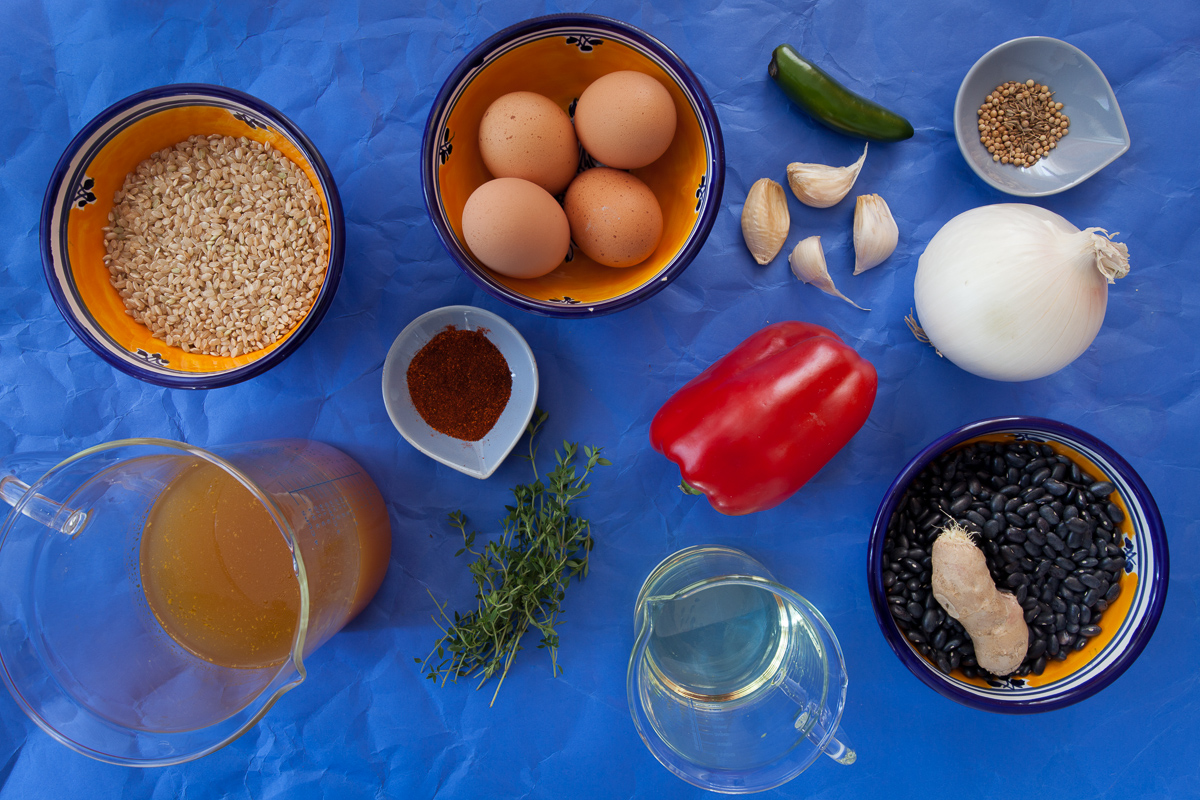
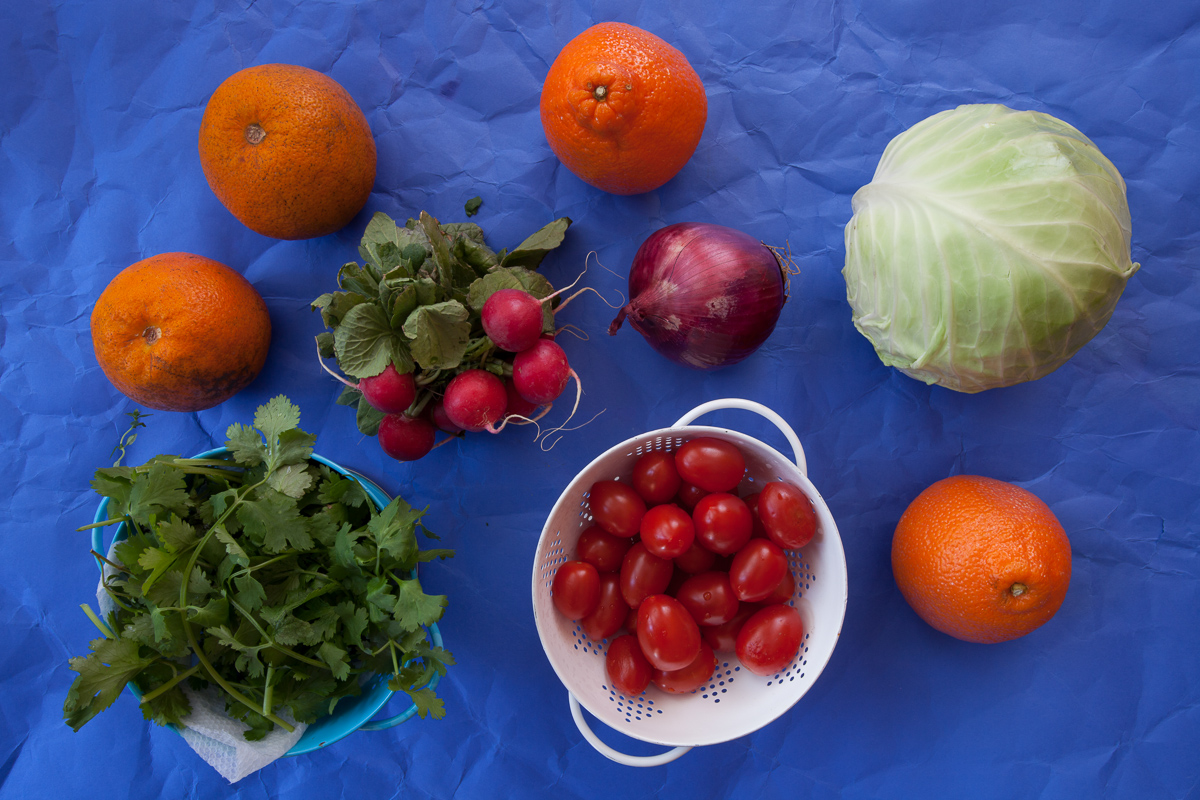
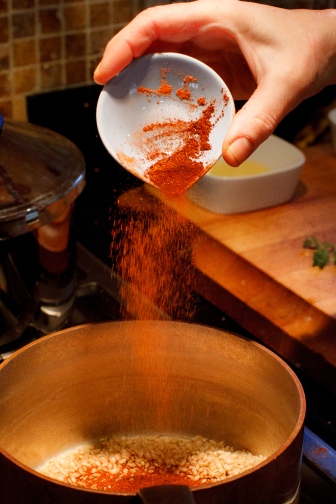
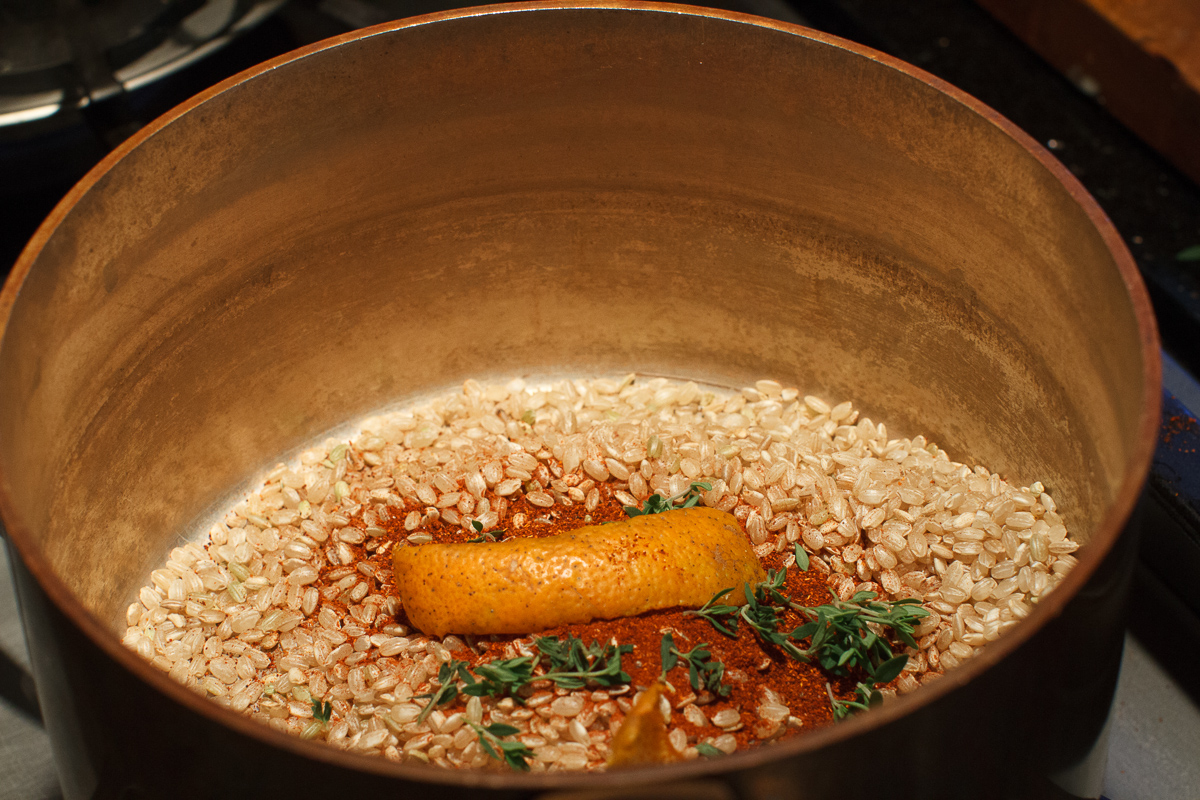
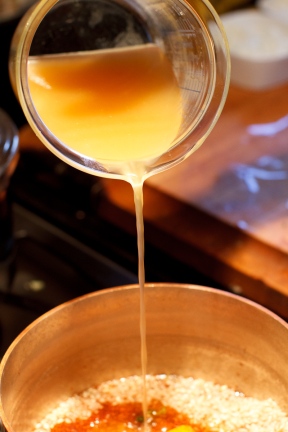
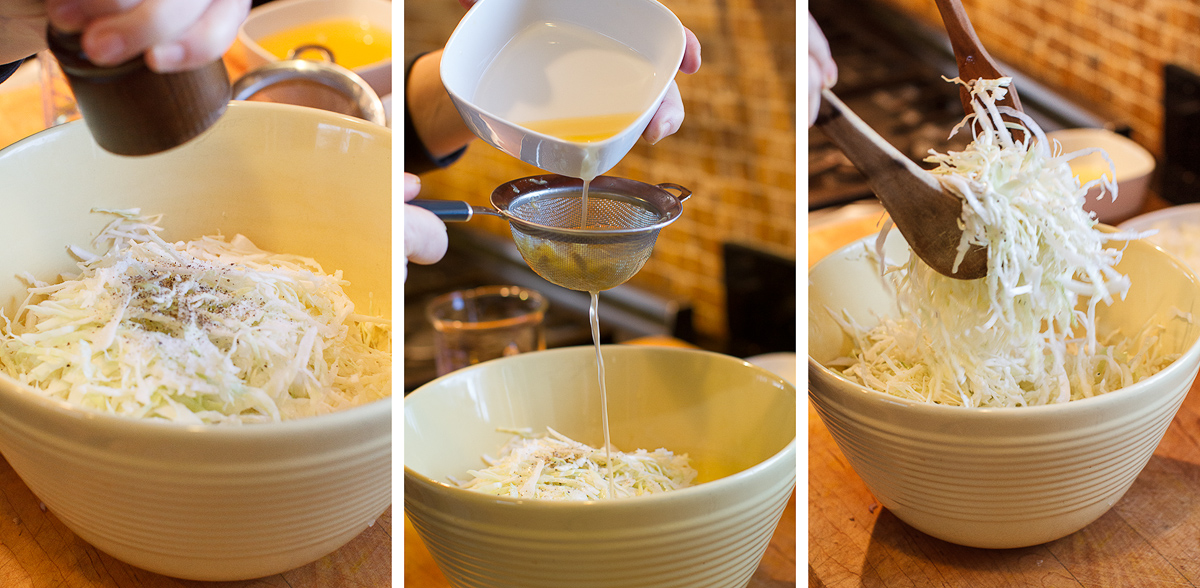
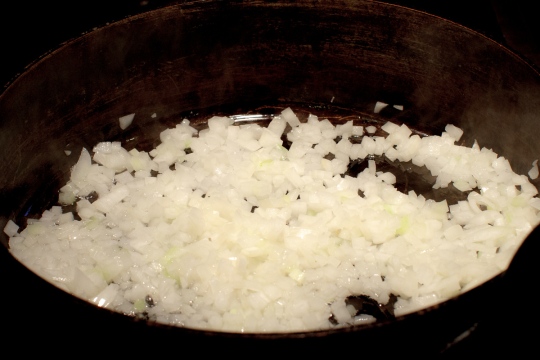
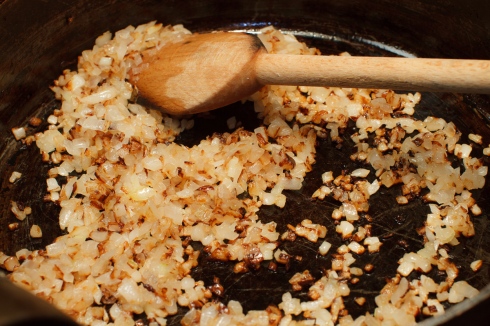
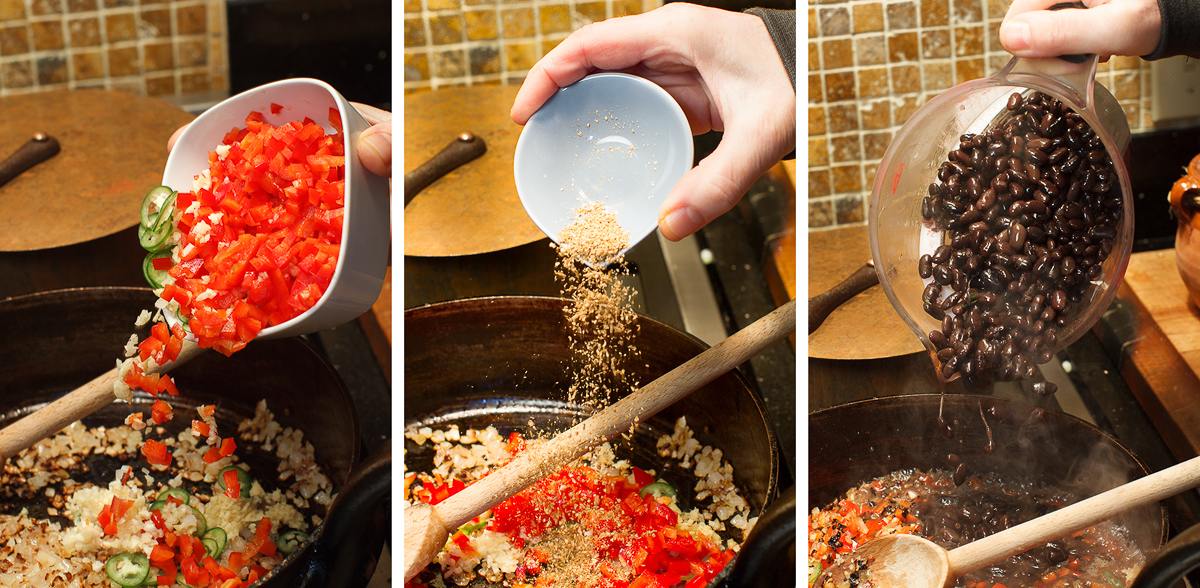
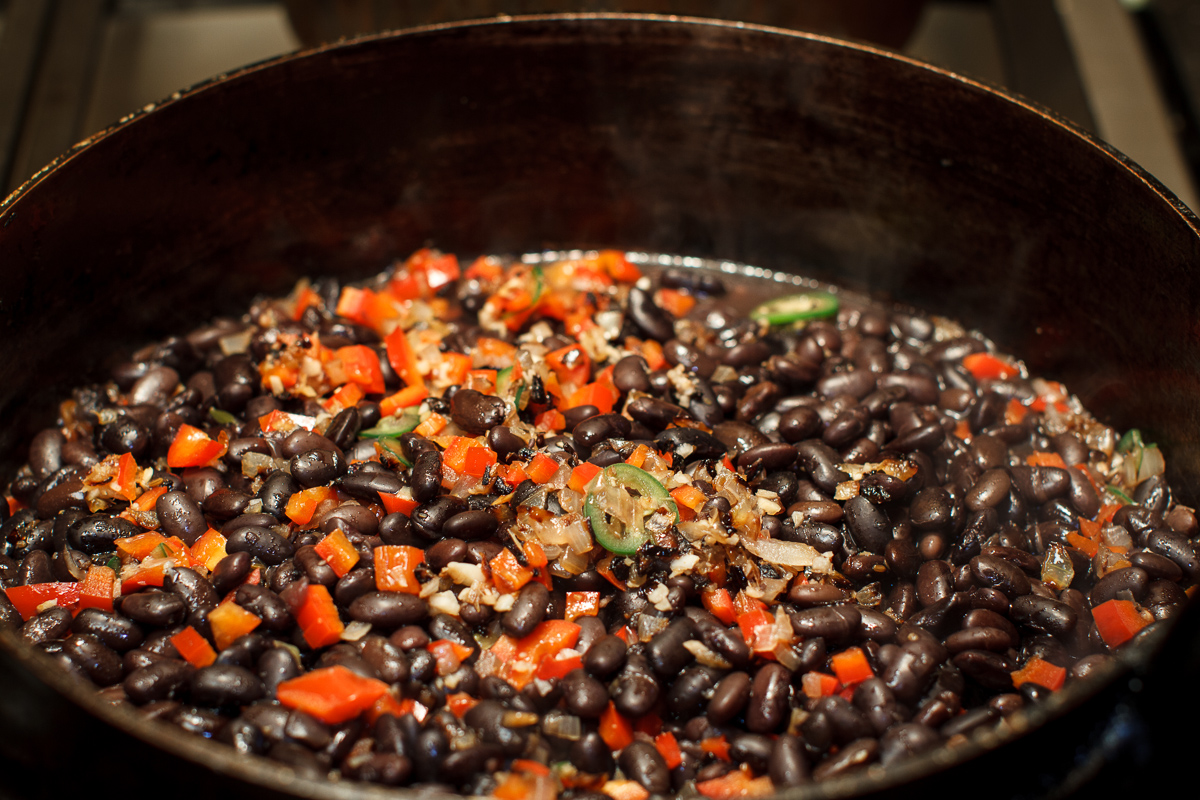
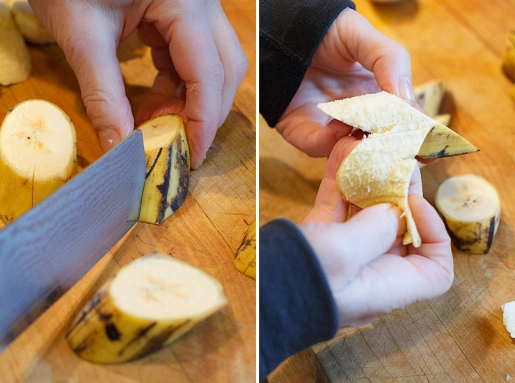
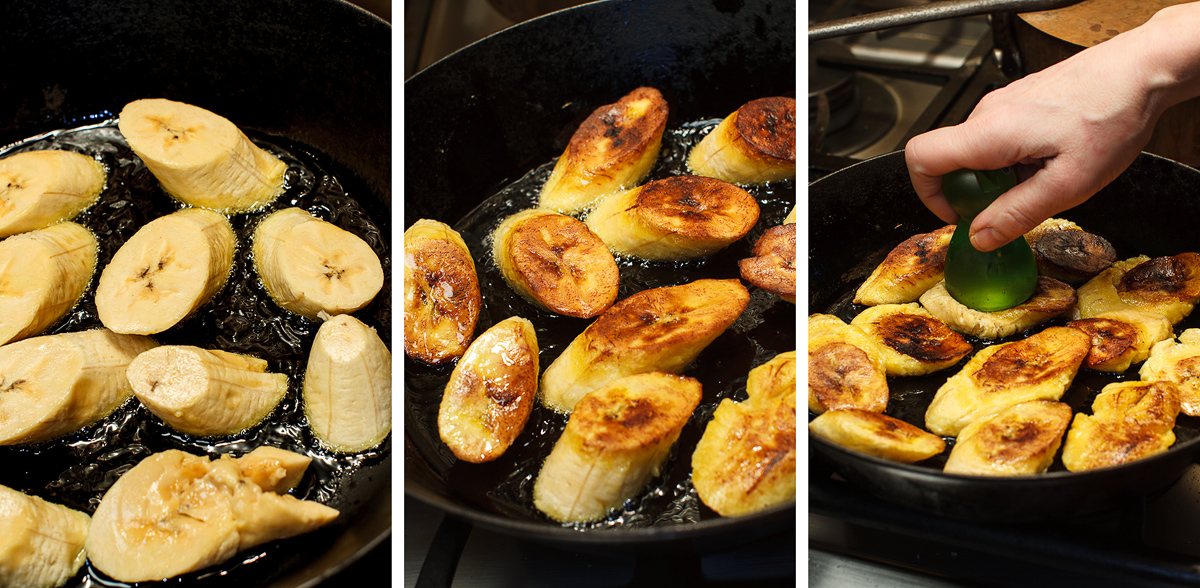
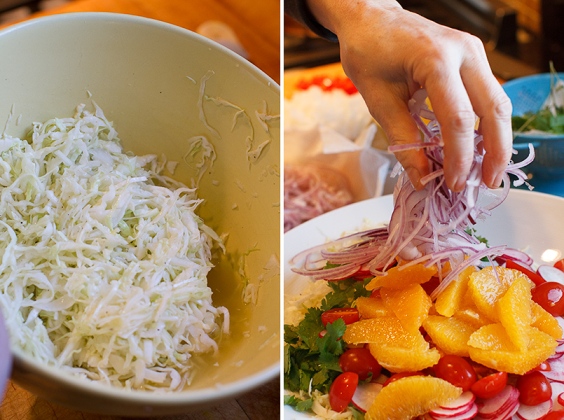
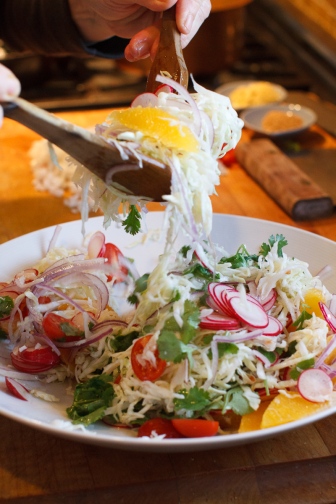
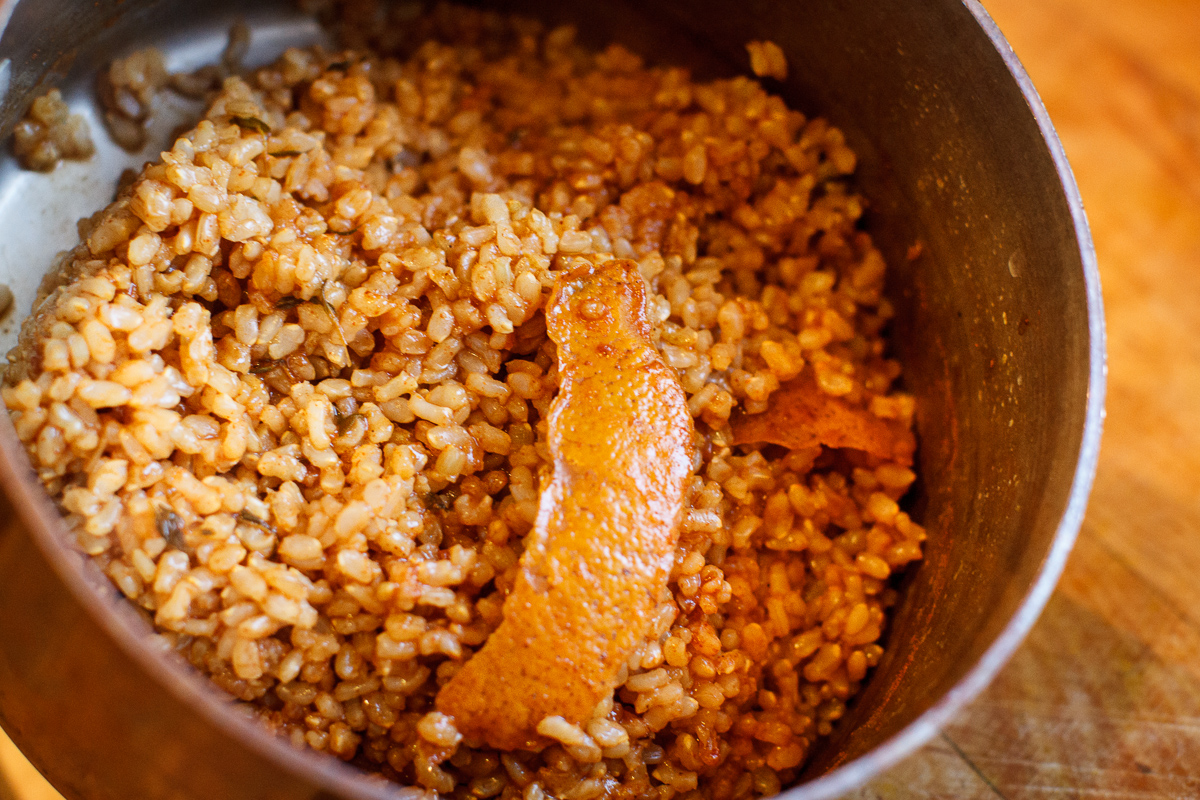
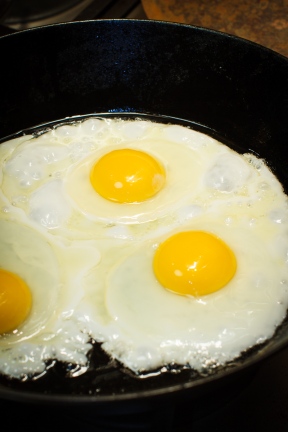
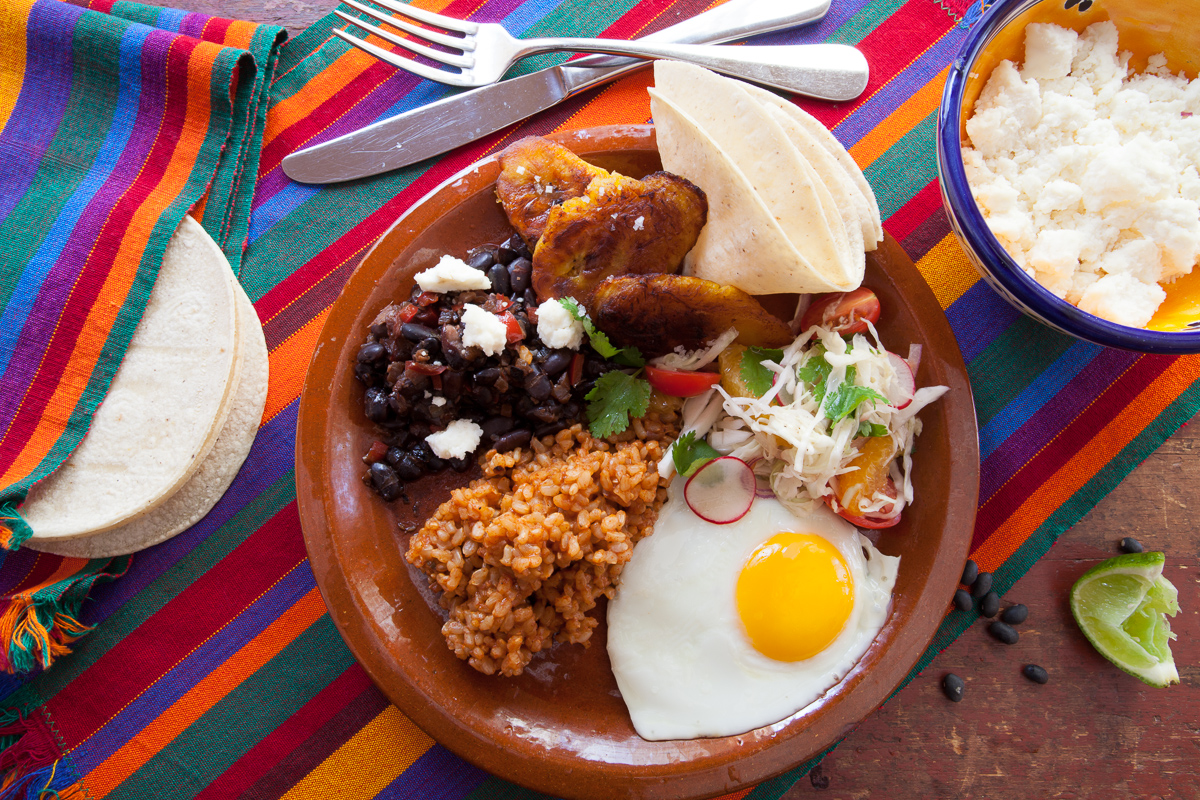
Jody Notes:
Casado is a bunch of simple recipes combined into meal. You don’t have to go for the full boat, but I thought I’d give you the option – it makes a great brunch. I doubt Costa Ricans eat much brown rice, but with the exception of risotto we haven’t had white rice in house for years. Brown rice ups the healthy ante. You’ve probably notice by now that we’ve been on a bit of an egg roll lately, which is culinarily accurate, but you can also find casado with a simple small portion of beef, chicken or seafood. Think of our version as a shout out to all of you with chickens in your back yards and great eggs in your kitchen.
Each recipe stands on its own and the beans and rice will last in the fridge 3 to 4 days. Even the cabbage salad works as leftovers for a few days. The tomatoes get a little soft, so pick them out if they bother you (not me), but otherwise, I think the salad gets better after a day. Ken happily microwaves leftover sautéed plantains, but I only like them right out of the pan.
The recipes call for both sweet and sour oranges. I located sour oranges at Market Basket in Somerville, my source for most of the unusual ingredients we’ve needed for the Blue Zone series. If you don’t have access to a market that caters to Caribbean tastes, then substitute the juice of 1 sweet orange and 1 lemon for the juice of 2 sour oranges.
When I was 17 I spent the summer in Guatemala with my cousins. Each day we ate a variation on the same lunch: black beans cooked with lard; queso fresco; a grilled meat or fish; and a salad that we scooped up with hand-patted corn tortillas, smaller than the ones you see here. With daily repetition the lunch became comfort food. The first bite of this Casado transported me back. The tortillas in this post are from my friend Chef Jamie Mammano’s local tortilla factory, La Niña Tortillas, in Chelsea, Massachusetts. My Guatemalan cousin happened to visit us this week in time to sample the Casado. She pressed a warm tortilla to her face, inhaled, and said, “Mmmmmm, these are right.”
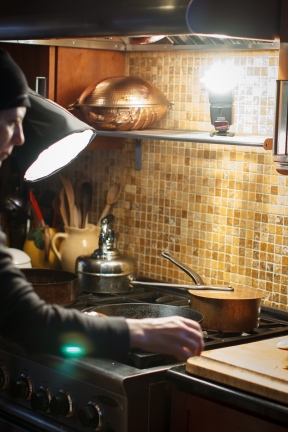
Go ahead; click on a photo in the gallery to see it writ large. Left and right arrow keys will move you through the photos.




































This is such a great post! I’m fascinated by the Blue Zones and just last week, at dinner, I sent a few people here to read your post on Okinawa. (My cousin was stationed there quite a few years ago.) As fascinating as this is, you photos are all beautifully shot and really do make these entries, for me, visually stunning. Well done, all way ’round.
Hi, John. Thank you for your generous comments. This series has challenged Jody and me, but it’s gratifying to see it has intrigued readers. Our final Blue Zone stop is coming up next week. Ken
I’m heading back with friends to the Nicoya penisula for the second time. We stay on the beach side in Santa Teresa. My favorite thing about the last trip, besides the excellent beaches, were the casado we enjoyed each day for lunch followed by a siesta. Having read this post, I’m looking forward to our trip even more!
Lucky you! I have a journalist brother who lived in Costa Rica for severa years and was familiar with the area, but to be honest I’d never heard of it before reading about the Blue Zones. I’m glad to hear you enjoyed the casado–frankly I’d like to get my hands on a few cashew apples, but I understand the skin is so thin that they don’t travel well. Thanks for leaving the comment. Ken
Love the colors on that plate. Eat the rainbow I always say.
Good observation, Steve! Although after reading about these people I wish there were a few pieces of their fruit rainbow I could get my hands on. I thought I’d eaten a fair variety of unusual fruits, but some of these items I’d never even heard of. I’d kill for a cashew apple. Ken
Yum, yum and yum! Great post and photos! I find the story of The Blue Zones fascinating so this post was even more interesting to me than just my love of great food. Thanks for sharing – I’ll definitely be trying this!
Hi, Lesley–it is an interesting story, isn’t it, especially since so many of the people–if you take a close up look—seem to be doing it with so little. Thanks for the comment. Ken
Health benefits or no, that’s one beautiful plate!
Thanks, Michelle–and the leftovers are grand. Ken
Wow, you’re blog is perhaps the most beautiful and well designed one I’ve seen! Also, your casado does look delicious and very different.
Thanks, Sean. Steal away. Ken
What a grand & very appetizng post this surely is! :) I love the step-by-step guide too! fabulous pictures too! :) AMAZING!!!!
You’re very sweet. Ken